Graphic Design Classes – Fall 2025
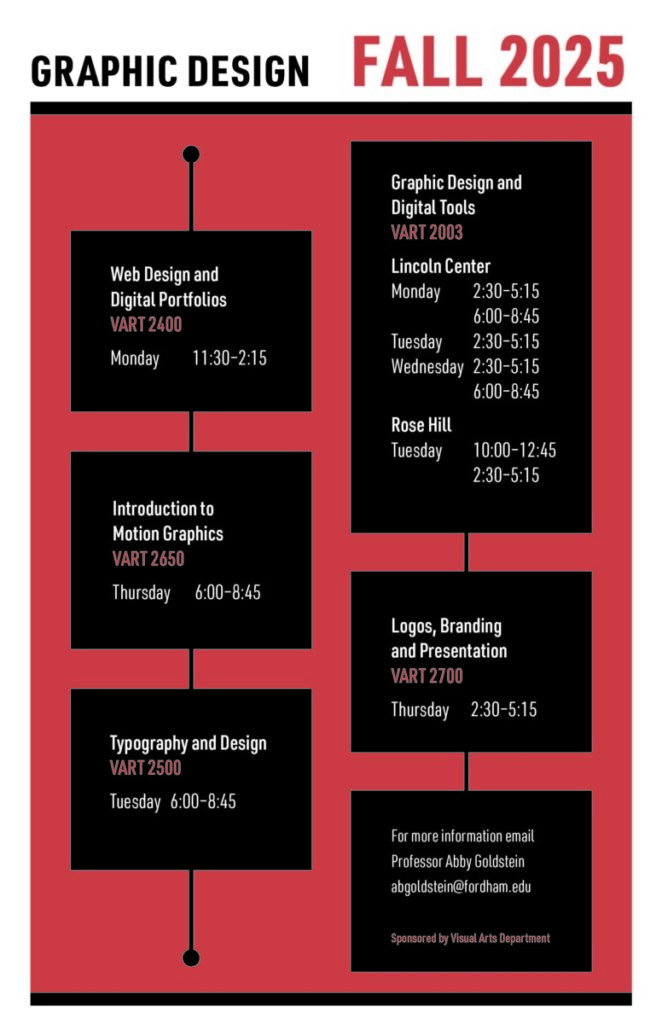
For more information, contact Professor Abby Goldstein.

For more information, contact Professor Abby Goldstein.
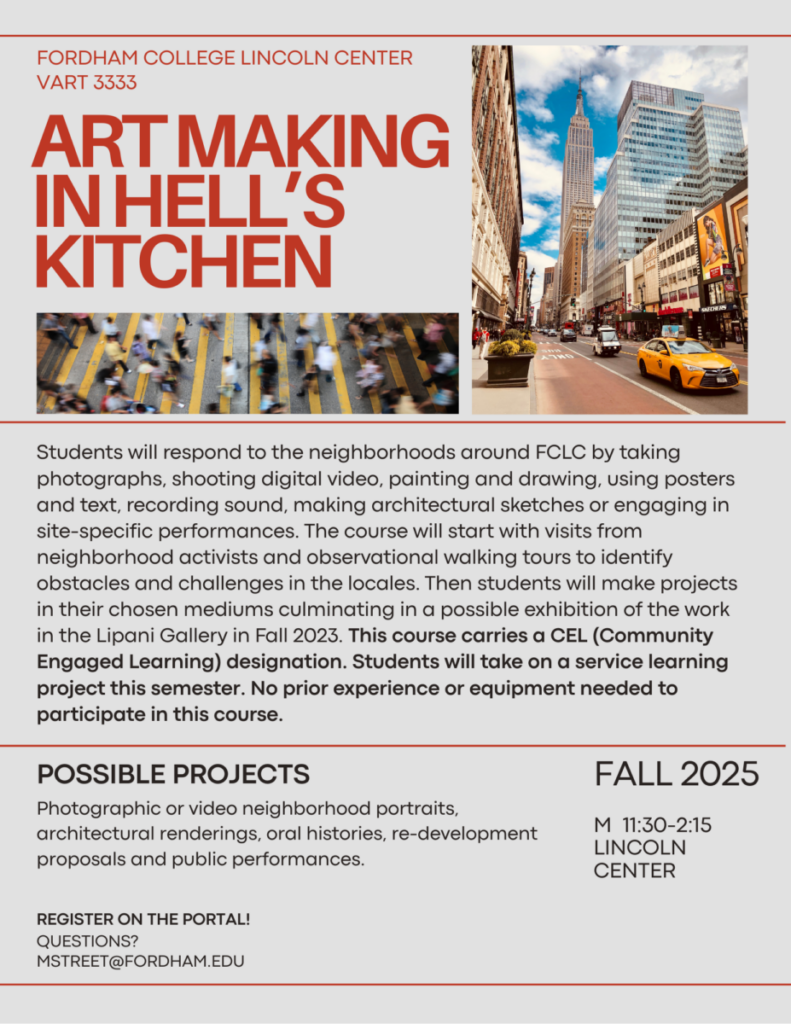
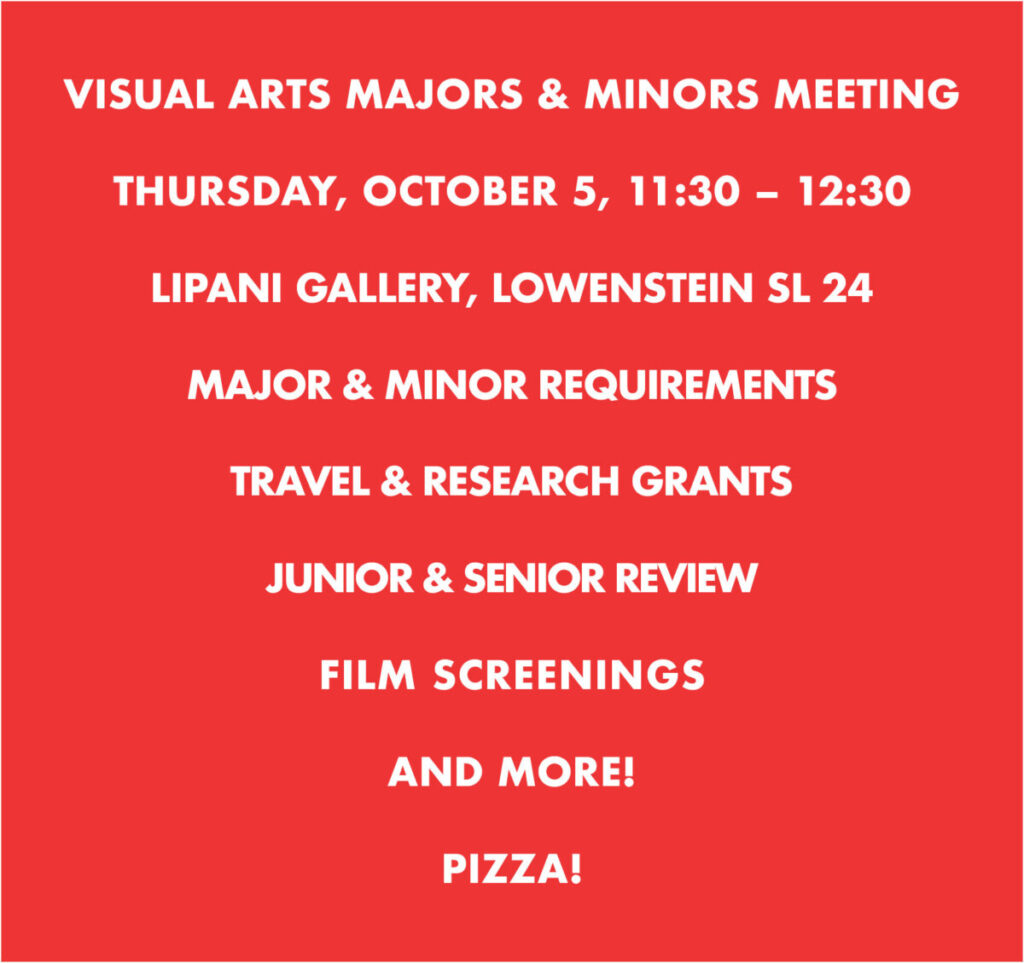

Projects selected and created by BALCONY: International Network of Curators
Participants: Raya Bruckenthal, Manuela de Leonardis, Richard Demarco, Drorit Gur Arie, Felice Hapetzeder, Michael Lazar, Paul Malone, Tomasz Matuszak, Anibal Pella-Woo, Fabrizio Perozzi, Doron Polak, Nicola Rae, Maayan Tsadka, Jan Van Woensel, Jaroslav Vančát, Joyce Yahouda, Dzintars Zilgalvis, Kriss Zilgalvis
Organizer: Stephan Apicella-Hitchcock
Fordham University’s Lipani Gallery
June 23—July 28, 2023
Public reception: Friday, June 23rd, 5—7 pm
Fordham University at Lincoln Center map
113 West 60th Street at Columbus Avenue
New York, NY 10023
Map to the Lipani Gallery
fordhamuniversitygalleries
https://balcony-art.com/
Fordham University is proud to present a new exhibition in the Lincoln Center Campus Lipani Gallery, ARCHIVUM, which brings together twelve curators from nine countries to select over thirteen artists. Through various forms, including book, installation, photography, sound, and video, this exhibition’s contributors explore what might constitute an archive. With that question as the starting premise, the works on display provide a range of interpretations of places, events, and institutions and raise numerous questions about research, commerce, history, translation, and memory.
The French philosopher Jacques Derrida stated that the question of archives is not a question of the past. It is a question of the future, a question of response, of promise, and a responsibility for tomorrow. The archive has become raw material and inspiration for many artists over the previous decades. Artists develop different levels of relationship with personal, familial, and public archival material. They move in a flexible space of history and cut across the depths of time. They decompose archival materials, disrupt and reference them, and create new narratives from concrete or imaginary archives. The archival memory they control, mark, and limit starts a conversation in which the artist decides who will enter the gates of memory.
Balcony: International Network of Curators was set up by Drorit Gur Arie, Doron Polak, and Michael Lazar in April 2020 as a network of independent international curators. The platform establishes connections between art curators to exchange professional information and initiate joint projects.
This exhibition, ARCHIVUM, is sponsored by Fordham University’s Department of Visual Art and is organized in New York by Professor Apicella-Hitchcock.
Link to the exhibition
For more information, please contact Stephan Apicella-Hitchcock.
For the Visual Arts Department Website: click here.
Instagram: @visualartsfordham
Drum roll, please—clocking in at 312 pages with over 3,000 images and approximately 87 miles of behind-the-scenes walking over nine days—the Case Study Tokyo 2023 book is complete!
Take one part working methodology from the influential 1972 book, “Learning from Las Vegas: The Forgotten Symbolism of Architectural Form,” combine it with the megacity of Tokyo, add Fordham University Gabelli students, stir for ten days in Japan, and what do you get? You acquire knowledge through experience with a small team, realized in a research volume focusing on branding, sensory marketing, architecture, design, photography, and urban planning.
Preview the entire book online.
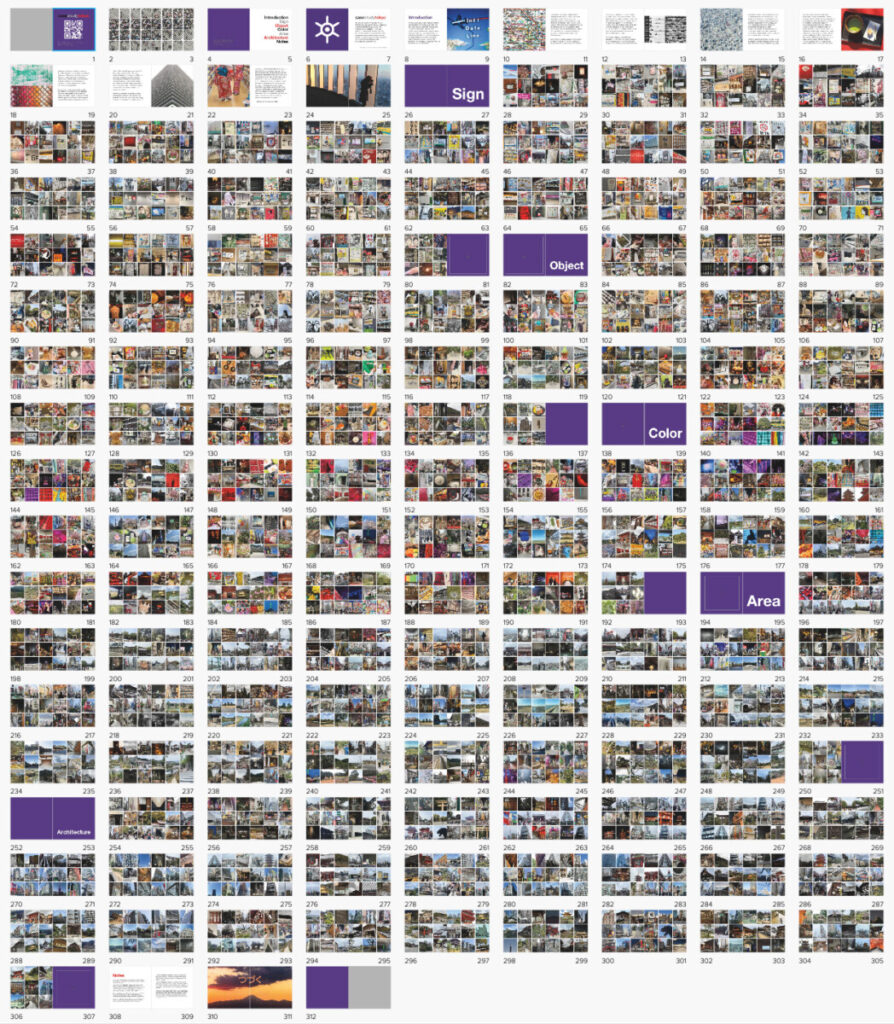
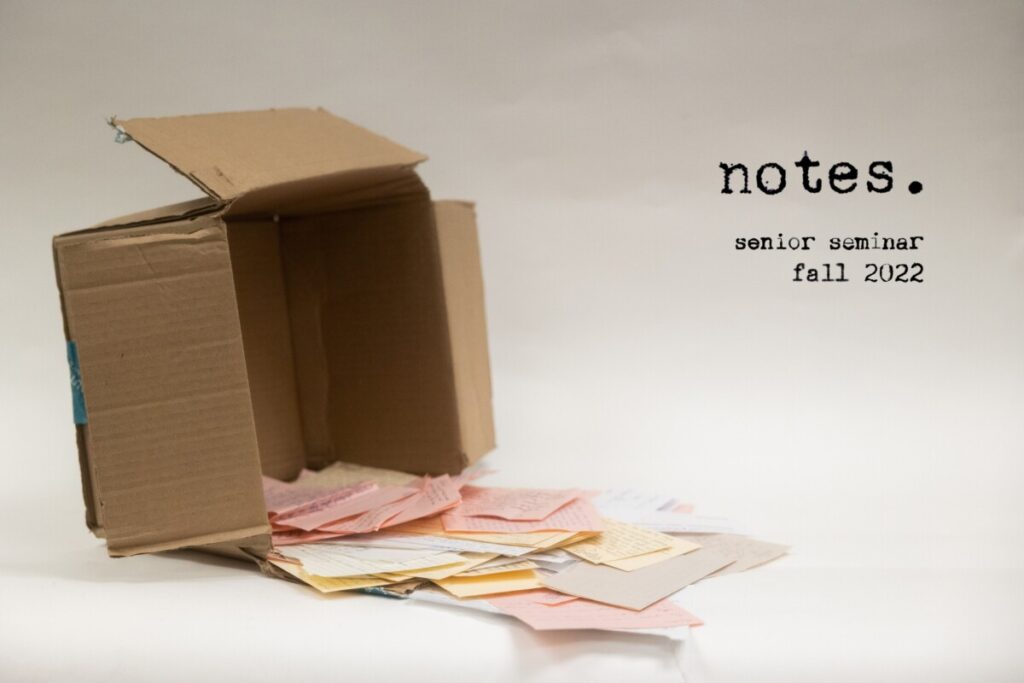
| Featuring: Lu Aubin, Alexandra Chambers, Bryson Clark, Alyssa Daughdrill, Molly Frank, Katherine Heaton, Anna Koch, Chloe McGee, Maggie McNamara, Amelia Medved, Angela Payne, Dino Romano, Slav Velkov, Schuyler Workmaster, John Zahran-Colon The Fordham University Galleries December 9, 2022–January 31, 2023 Fordham University at Lincoln Center map 113 West 60th Street at Columbus Avenue New York, NY 10023 fordhamuniversitygalleries *Outside visitors must show proof of vaccination and booster to enter the school.The Fordham University Department of Visual Arts is pleased to announce the current exhibition in Fordham University’s Lipani Gallery, notes. (Highlights from the Senior Seminar: Studio Art). This exhibition brings together the fifteen artists who participated in the 2022 Senior Seminar: Lu Aubin, Alexandra Chambers, Bryson Clark, Alyssa Daughdrill, Molly Frank, Katherine Heaton, Anna Koch, Chloe McGee, Maggie McNamara, Amelia Medved, Angela Payne, Dino Romano, Slav Velkov, Schuyler Workmaster, John Zahran-Colon. The work on display represents a snapshot of their endeavors thus far and provides a glimpse into their upcoming senior thesis exhibitions beginning in March 2023. Their chosen mediums range between architecture, film/video, graphic design, installation, painting & drawing, and photography. Accordingly, their styles and topics vary; however, their attention to craft, concept, and message is consistently deliberate and thoughtful. Please be certain to follow our talented emerging artists as they exhibit throughout the spring semester in our Ildiko Butler Gallery and the Susan Lipani Gallery.Stephan Apicella-Hitchcock, co-curator, 2023 Link to the exhibition For more information, please contact Stephan Apicella-Hitchcock For the Visual Arts Department Website: click here. |
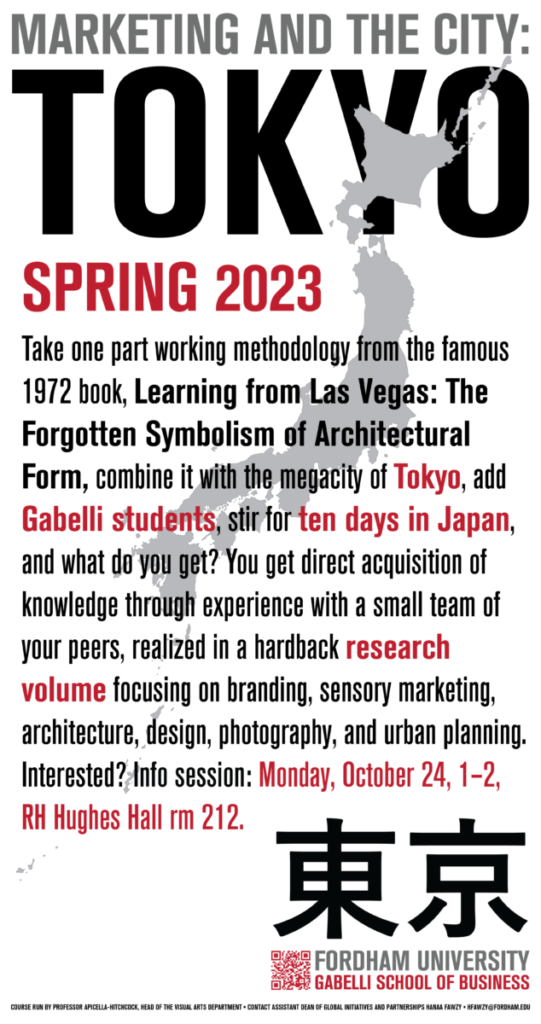
The 2022 Senior Thesis Exhibitions have begun, so come out and support our amazing artists!
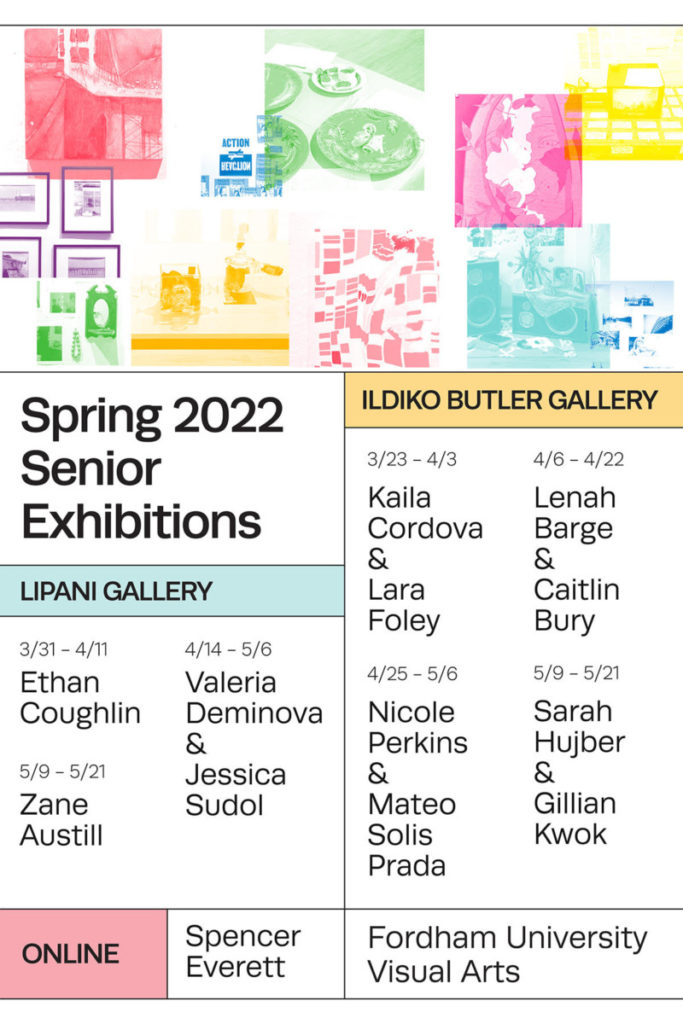
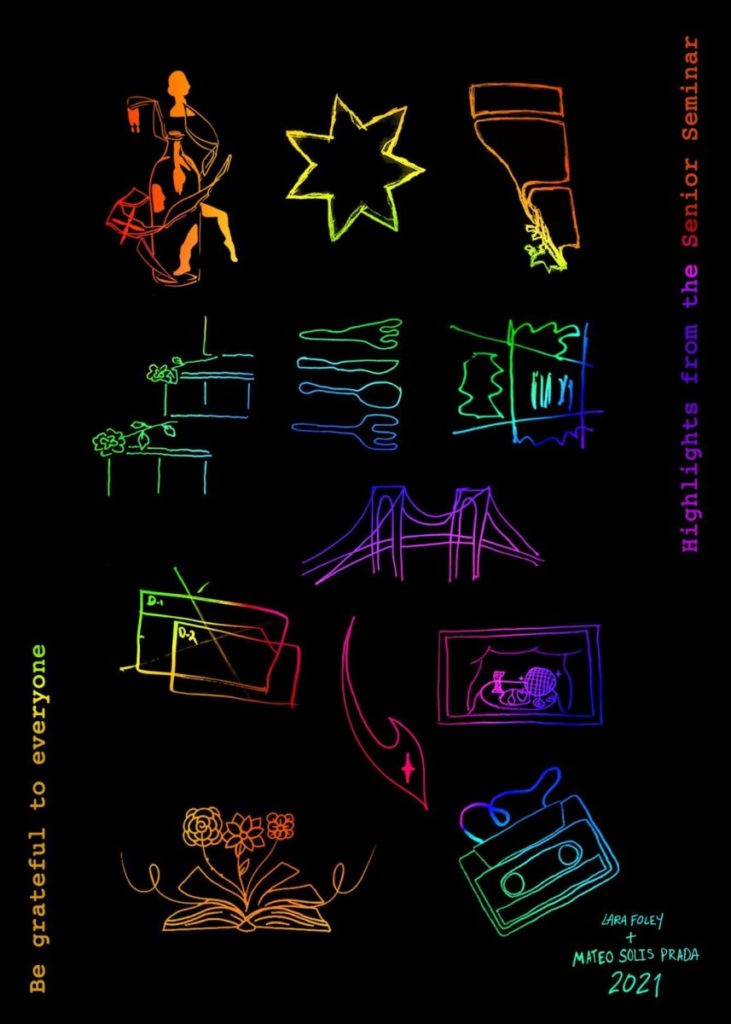
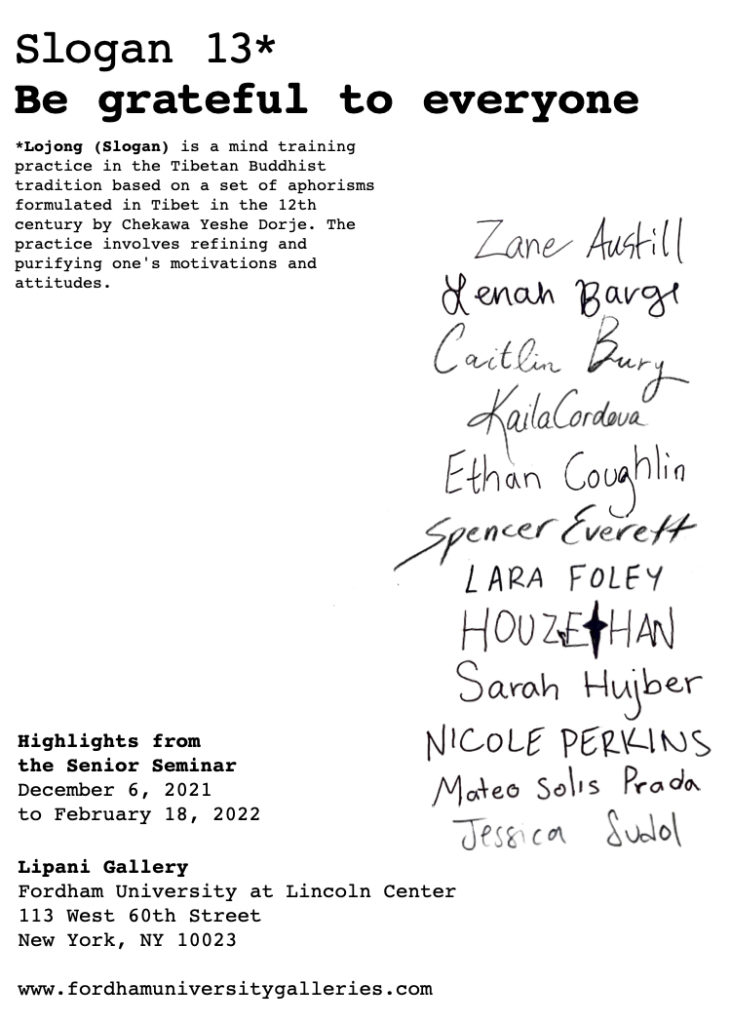
This year’s Senior Seminar exhibition includes work from 12 Visual Arts majors who have worked to present an integrated exhibition, one that celebrates both individual direction and collaboration while inevitably responding to this moment of profound change. As the exhibition’s title suggests, students found ways to make space for new paradigms while engaging in an ongoing conversation revolving around themes of fragility, resilience, memory, transformation, silence, and song. Their work celebrates beauty, personal exploration, historical and political engagement, and empathy, as well as a connection to the sensorial pleasures of materiality, movement, and community.
Zane Austill’s work explores his decision to take a sustained vow of silence. The notes displayed in his installation provide insight into the nature of his conversations since taking the vow, moments both mundane and profound. His film traces the process as he works to understand how an individual need for silence conflicts or is accommodated both inwardly and by those around him.
Lenah Barge looks back to the form of Civil Rights era protest imagery to underscore the long, ongoing struggle for equity in our society. She infuses the form with images from her personal history and asks that we consider engagement, and work towards change.
Caitlin Bury’s installation is inspired by her aunt’s experience as a vocalist in a 1960’s group named The Shannons. Bury finds inspiration and strength in her aunt’s story as she pursues her own creative life, and her project looks at common threads running through their stories as a way of creating histories.
Kaila Cordova creates digital portraits which address the positive and negative emotions that people have experienced during quarantine due to COVID-19. Each image is named after a famous Victorian author and botanical collectives, structures, and arrangements, and relies on the symbolism of Florology to code the images with clues the sitter’s state of mind.
Ethan Coughlin’s My City, Your City is about exploration and the joy of finding unexpected beauty all around you. Coughlin explores New York City and finds wonder in the often unappreciated, hidden places he stumbles upon, such as a colony of Argentine parrots living in the heart of Brooklyn. His installation prompts us to invest attention in the places we call home.
Spencer Everett’s sculptural collages of paper and glass explore the liminal space that exists between the two-dimensional and three-dimensional world. His work addresses the impossible inconsistencies between tangible truth and a “bodiless imposition” experienced in the modern world.
Lara Foley presents painted images on paper and wood that are small in scale and meticulously detailed through layers of pale washes. Foley is interested in the way our subconscious holds onto unanticipated, often peripheral aspects of life, turning small afterthoughts into the moments that continue to carry significance in our lives.
Houze Han makes paintings that convey a deeper, narrative world beyond the canvas, using symbolic shape as language. The composition of each form, the edge, texture, and color, emphasizes the significance of logical, analytical choices made, which in combination transcend their particular forms to tell a story hidden deep inside the artist’s mind.
In her photographic series, Domestic, Nicole Perkins engages the constructs of the interior and the still life to create lush, tightly focused images that ask the question: how do we create a home for ourselves? What does it feel like to be home?
Mateo Solis Prada celebrates the communal experience of sharing a meal via sculpture, sound, and text. His work viscerally conveys the joy of continuity and connection. He sculpts foods that are family heritage, symbols of love and creativity passed down from generation to generation, and the color and care with which he sets his table invites participation in his celebration.
Sarah Hujber photographed the landscape of the American West, spending afternoons in ghost towns where nature was eagerly reclaiming the land lost to human-made structures. Hujber raises questions about lives abandoned, the American Dream, and power of nature in a series of black and white photographs.
In her painting, Not Finished, Jessica Sudol addresses the anxiety that results from the constant demands on one’s time through a slow, methodical meshing of painting and digital structure.
Highlights from the Senior Seminar Website
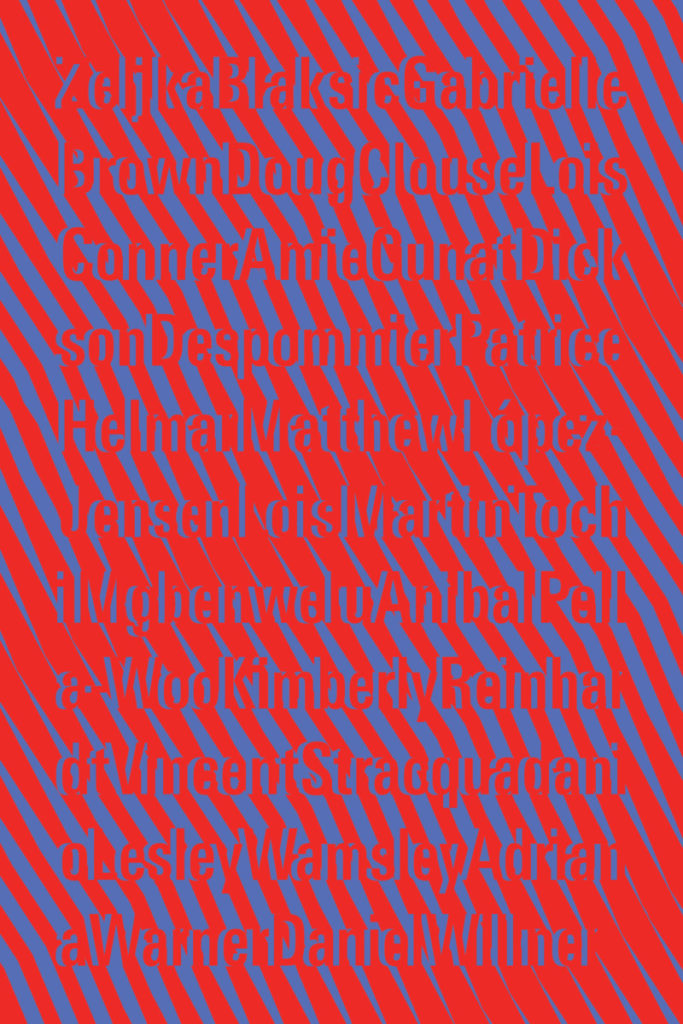
The Fordham University Department of Visual Arts is pleased to announce the release of the 2021 Adjunct Faculty Spotlight catalog on our gallery imprint, Hayden’s Books.
The Department of Visual Arts is fortunate to have so many exceptionally talented Adjunct Professors teaching our students; in fact, we have so many skilled Adjuncts that we had to divide the Spotlight exhibition into two parts during the fall semester. Now, both exhibition installments have been brought together in a single 156-page volume providing a sampling of projects and texts representing each artist/professor.
In both their individual practice and collectively, one can discern a rigorous investigation into visual communication strategies, a spectrum of subjects, and a diverse range of representational methods. Further, this catalog provides an accurate snapshot of the Visual Arts Department, highlighting the breadth of disciplines offered, including film, graphic design, painting, and photography.
The 2021 Adjunct Faculty Spotlight catalog makes manifestly clear that our professors are vital artists as well as outstanding educators in the classroom. The catalog features the following artists: Željka Blakšic, Gabe Brown, Doug Clouse, Lois Conner, Amie Cunat, Dickson Despommier, Patrice Helmar, Matthew López-Jensen, Lois Martin, Anibal Pella- Woo, Kimberly Reinhardt, Vincent Stracquadanio, tochihannah, Lesley Wamsley, Adriana Warner, and Dan Willner.
Organized by Stephan Apicella-Hitchcock
Installation: Wilson Duggan